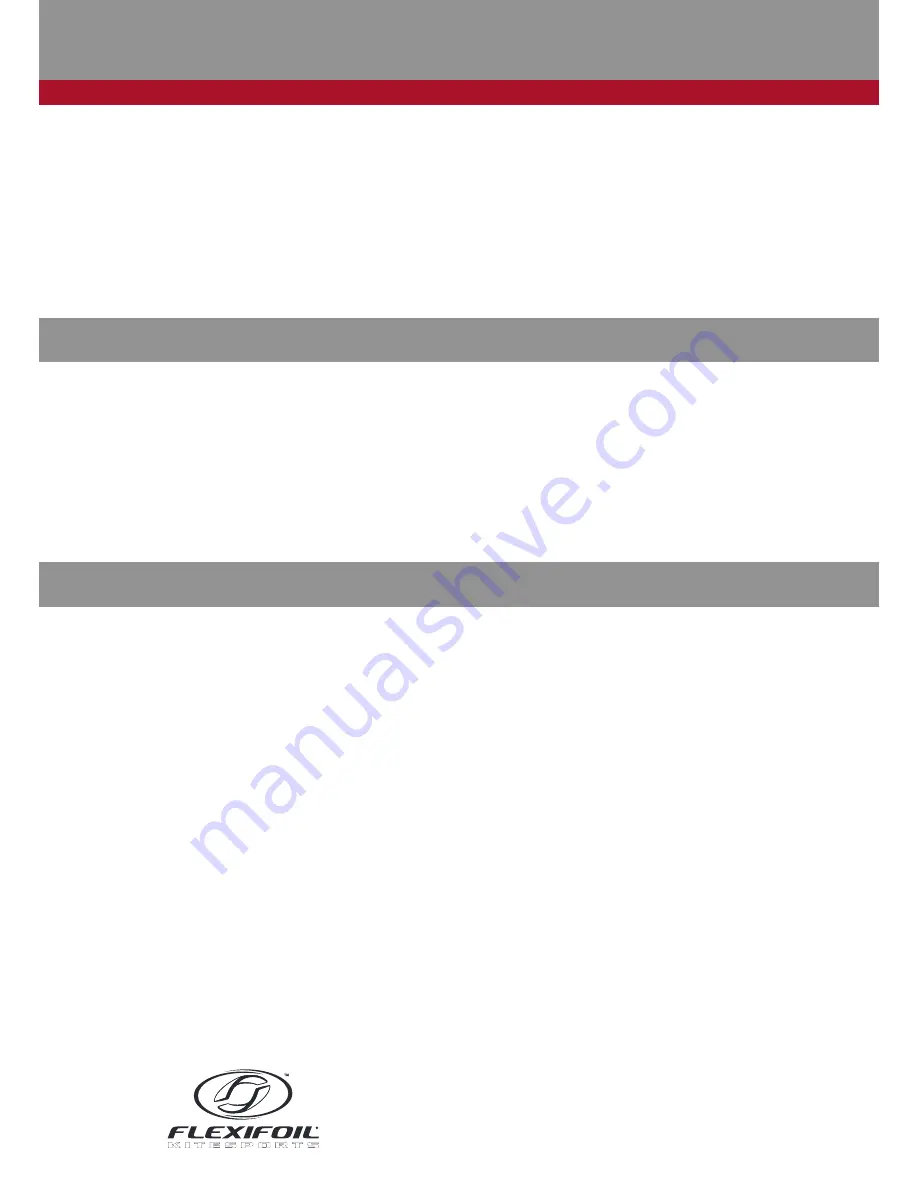
12.1 Care and Maintenance
AVOID flying your kite near trees, hedges, stone walls, barbed wire fences or other obstacles that
could damage your kite.
DO NOT drag your kite across the ground when trying to launch or land, especially in stubble fields,
on stony beaches or on other abrasive surfaces that could damage your kite.
NEVER store your kite wet. Always allow it to dry before packing and storage.
Your kite can be hand-washed with care in warm NOT HOT soapy water. Use a mild detergent, i.e.
washing up liquid, and a soft sponge.
DO NOT use aggressive detergents or abrasive materials to clean your kite.
DO NOT use a washing machine or tumble dryer!
ALWAYS check your equipment for wear and tear before using it and repair or replace accordingly.
Taking good care of your kite will prolong its life
•
•
•
•
•
•
•
12.2 Repairs Service
Damaged your kite? Flexifoil kites have been designed to be strong and durable. However, they are
not indestructible. If they are crashed hard into the ground or dragged they may get damaged. For
this reason we have a repairs service available.
STANDARD REPAIR SERVICE
Flexifoil offer a quick and inexpensive repair service to all its customers. We also stock spare parts
and sails for both current and discontinued kites.
Flexifoil undertake most repairs at our factory but overseas customers should contact their local
distributor for assistance. Please visit www.flexifoil.com/repairs for the latest information.
12.3 Warranty
At Flexifoil we believe in designing and manufacturing our products to the highest possible
standards. We pride ourselves on our outstanding quality control but if any of our products fail as
a result of defective workmanship or faulty materials, we will replace it free of charge. This is in
addition to your statutory rights.
Products will not be replaced which have been:
damaged as a result of normal wear and tear, misuse or neglect
repaired or modified without the authorisation of Flexifoil International Ltd
returned to Flexifoil International Ltd without a valid receipt
If you live in the UK, please return faulty products to your local dealer or Flexifoil International. If you
live outside the UK please return faulty products to your distributor. A list of dealers and distributors
can be found at www.flexifoil.com
Important note on flying lines
Flexifoil will not replace flying lines that have been improperly used, have become worn through
normal use or have failed as a result of knots in the line. If kites are flown on flying lines of
insufficient breaking strain, the lines will break. Always follow Flexifoil recommendations to ensure
that flying lines of an appropriate breaking strain are used when flying one or more kites.
•
•
•
Flexifoil International Limited
27 Regal Drive, Soham, Cambridgeshire, CB7 5BE, UK.
tel
+44 (0)1353 723131
fax
+44 (0)1353 722311
info@flexifoil.com
web
www.flexifoil.com
Ve
rs
io
n
1.
0
©
F
LE
X
IF
O
IL
IN
TE
R
N
AT
IO
N
A
L
LI
M
IT
E
D
2
00
5





























